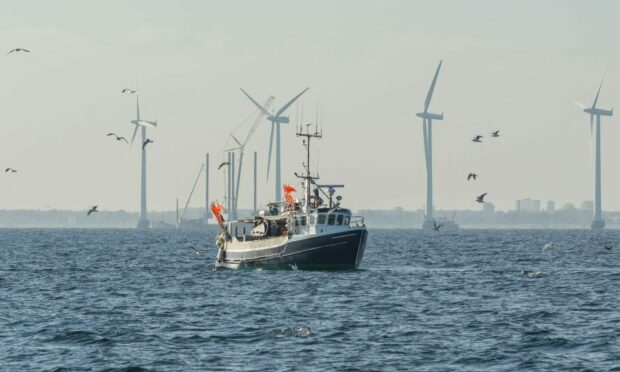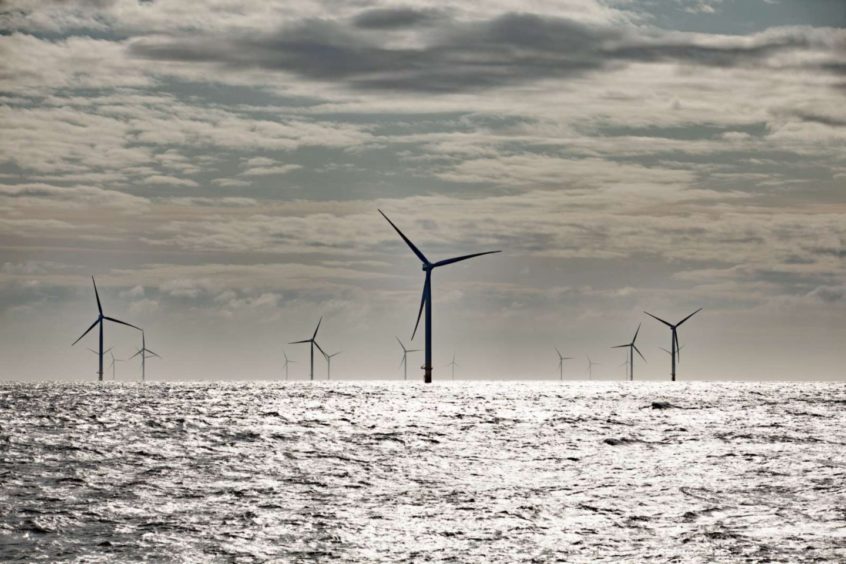One of the consortia bidding for seabed rights for new offshore wind farms has teamed up with marine scientists to study the environmental impacts of floating turbines.
Consortium partners Orsted, Falck Renewables and BlueFloat Energy will – if their ScotWind leasing round bids are successful – work with the Scottish Association for Marine Science (Sams) on a range of topics.
These would include investigating how fishing interests and offshore wind can work together, and how fish, marine mammals and seabirds interact with floating technologies.
Research into how floating offshore wind can operate alongside the fishing industry has also been proposed.
With all-new technology, it is vital to ensure it is carefully designed, with the environment in mind, and that we fully understand any effects it might have on the marine ecosystem.”
Duncan Clark, Orsted UK.
Mike Spain, head of enterprise at Sams, which is based at Dunstaffnage, near Oban, said: “Given Sams’ wide research portfolio, we have an interest in contributing to the resolution of several data gaps in floating offshore wind research.
“Collaboration with Falck Renewables, Orsted and BlueFloat Energy will allow for some of these issues to be explored in detail, which would be of great benefit to the wider sector and to other stakeholders.”
‘Immense’ energy potential
Duncan Clark, who heads up Orsted’s UK business, said: “The potential for generating power from floating offshore wind as we move towards a net-zero world is immense.
“With all-new technology, it is vital to ensure it is carefully designed, with the environment in mind, and that we fully understand any effects it might have on the marine ecosystem, and how to avoid and mitigate them.
“This work with Sams aligns with Orsted’s strong commitment to protect biodiversity, having announced earlier this year our ambition to deliver a net-positive biodiversity impact from all new renewable energy projects we commission from 2030 at the latest.”
Falck Renewables Wind managing director Richard Dibley said: “Our track record is of working as closely as possible with the communities around our developments.
“We’re currently carrying out a consultation into how Scottish communities could benefit from ownership of offshore wind.
“A similar study to work out how the fishing industry and offshore wind could peacefully and profitably coexist fits in well with our approach.”
Future studies could also focus on increasing the role of marine robotics in collecting data before and after the construction of floating offshore wind farms at remote sites.
BlueFloat Energy chief executive Carlos Martin added: “Floating wind is fast emerging as a game-changer for the energy transition and we are at the forefront of the technology evolution.
“We believe it is vital to collect more data and improve our understanding of the effects it has on the surrounding environment.
“With floating developments well-suited to being sited far offshore, research into the use of robotics in collecting data will be invaluable.”
£12bn-plus investment
Danish renewable energy giant Orsted recently unveiled plans to directly invest up to £12 billion in Scotland if it is successful with all five of its bids in the Crown Estate Scotland (CES) ScotWind offshore wind auction.
Billions more will be spent on the Scottish supply chain if Crown Estate Scotland gives the 8.8-gigawatt proposals the thumbs up, Orsted said.
Orsted’s bids include three on its own and a further two as part of the consortium with Spanish firm BlueFloat Energy and Italy’s Falck Renewables.
Developing new technologies is key to north-east’s net-zero future
The five proposed schemes involve a mix of fixed and floating wind technologies, with Orsted pledging to work with Scottish ports and suppliers to develop infrastructure and a supply chain that will establish this country as ‘a leading player in the global offshore wind market”.
CES aims to make initial offers to successful applicants in January.


